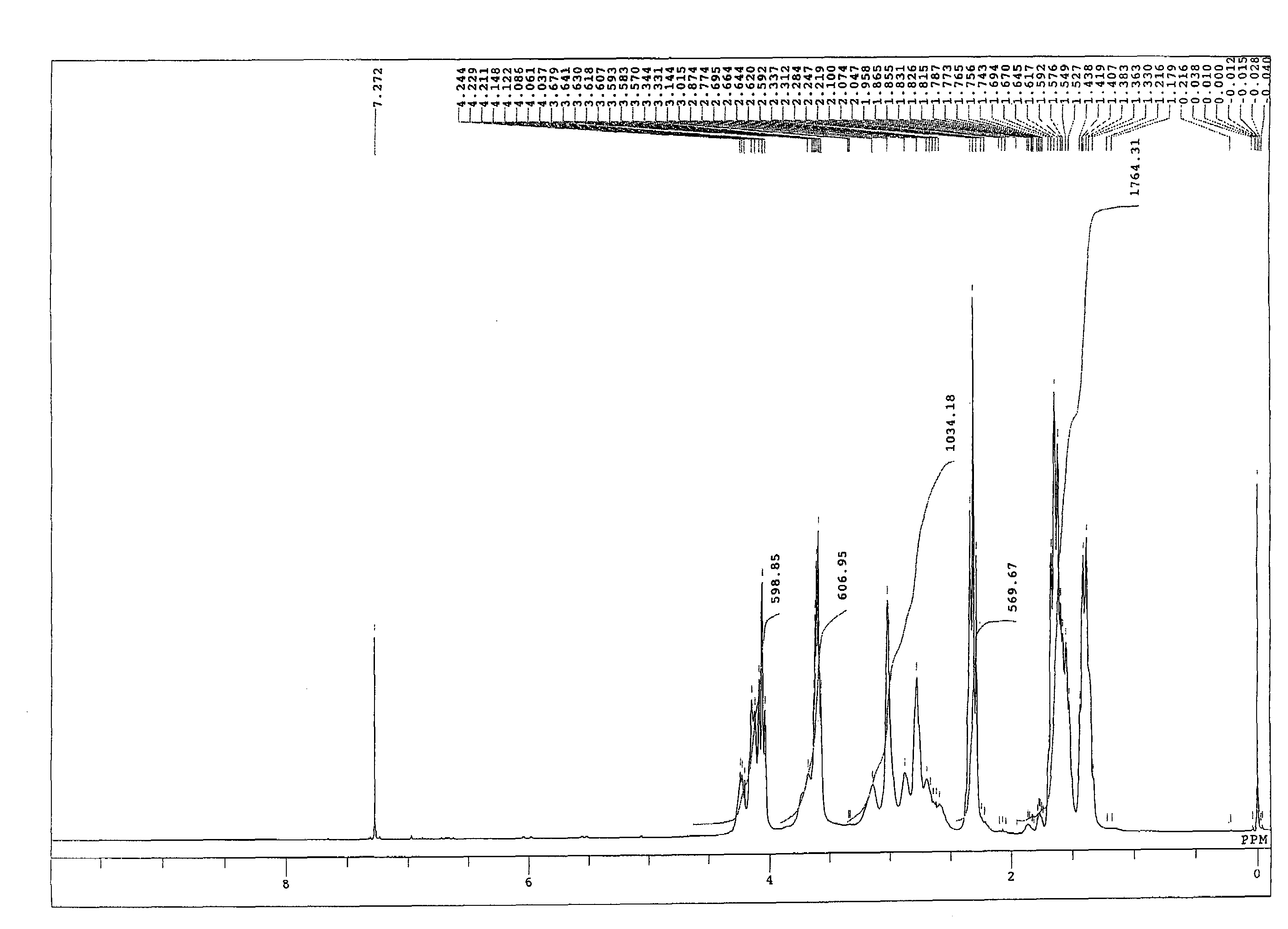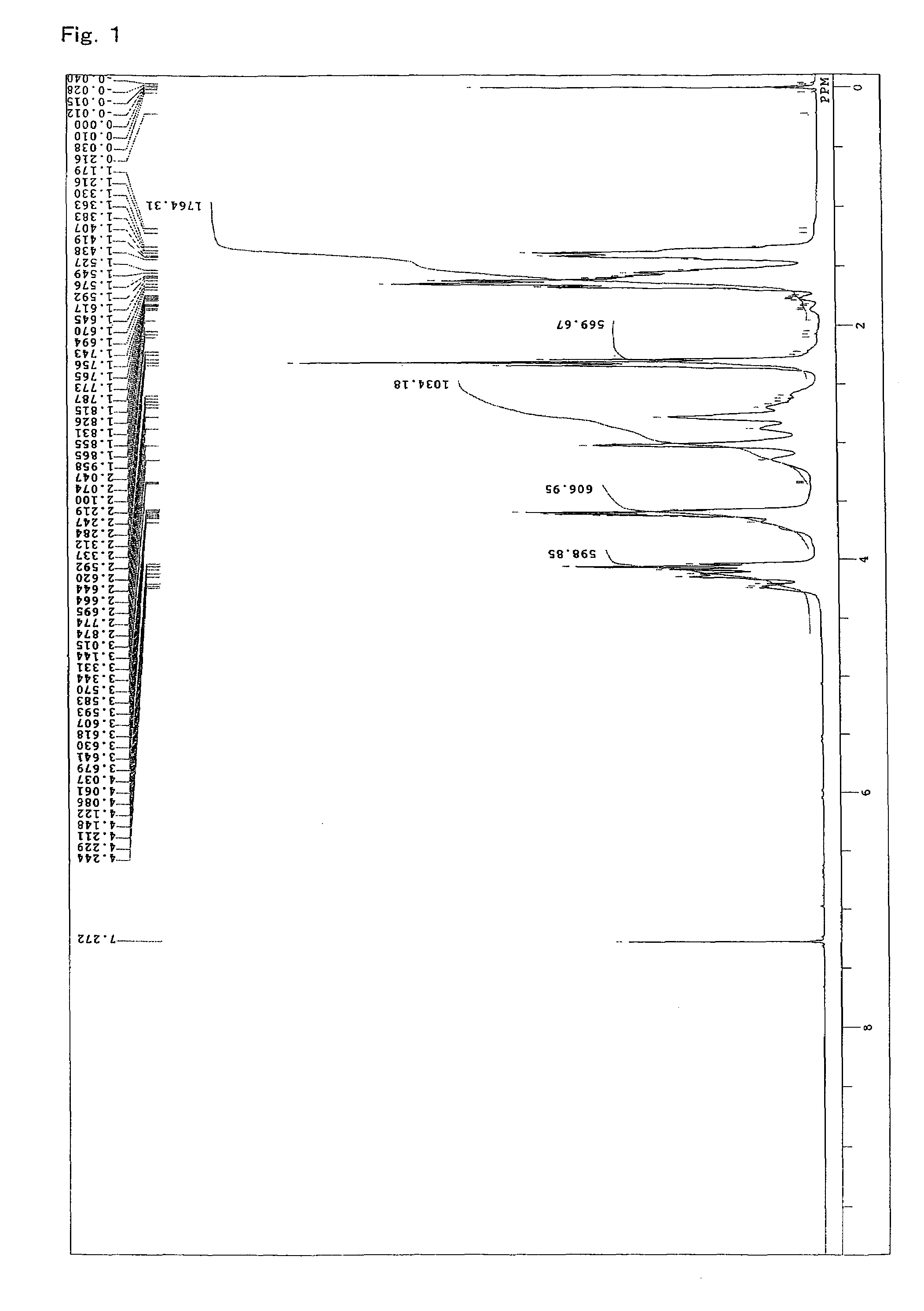Polyester polyol and polyurethane resin
a polyurethane resin and polyol technology, applied in the field of polyurethane polyol and polyurethane resin, can solve the problems of insufficient water-solubility or water dispersibility, insufficient carboxyl group effect on polymer modification, and insufficient removal of high-boiling polar solvents. achieve high hydrophilic group, high solubility, and high reactivity
- Summary
- Abstract
- Description
- Claims
- Application Information
AI Technical Summary
Benefits of technology
Problems solved by technology
Method used
Image
Examples
example 1
Production Example of Polyester Polyol
[0107]A 4-neck flask equipped with a stirrer, a thermometer, a condenser, and a nitrogen gas inlet was charged with 1059.2 parts of an ε-caprolactone (“PLACCEL M” manufactured by Daicel Chemical Industries, Ltd.), 940.8 parts of sodium N,N-bis(2-hydroxyethyl)-2-aminoethanesulfonate (“DOS-250” manufactured by Hopax Chemicals Mfg. Co., Ltd.) as an initiator, 0.4 part of a tetra-n-butoxytitanium catalyst, and 4 parts of a phenol-series stabilizer (“IRGANOX 1010” manufactured by Ciba Specialty Chemicals K.K.), and polymerization was conducted at 120° C. for 16 hours under a nitrogen flow. FIG. 1 shows a spectrum of 1H-NMR of the obtained product. From FIG. 1, it is clear that a lactone ester derivative having a hydroxyl group at a terminal was obtained by addition of a lactone. Moreover, regarding the obtained product, the properties, the solubility in a solvent, and the reactivity with an isocyanate group were evaluated. The results are shown in Ta...
example 2
Production Example of Polyester Polyol
[0108]A 4-neck flask equipped with a stirrer, a thermometer, a condenser, and a nitrogen gas inlet was charged with 1059.2 parts of an ε-caprolactone (“PLACCEL M” manufactured by Daicel Chemical Industries, Ltd.), 940.8 parts of sodium N,N-bis(2-hydroxyethyl)-2-aminoethanesulfonate (“DOS-250” manufactured by Hopax Chemicals Mfg. Co., Ltd.) as an initiator, 0.4 part of a stannous chloride catalyst, and 4 parts of a phenol-series stabilizer (“IRGANOX 1010” manufactured by Ciba Specialty Chemicals K.K.), and polymerization was conducted at 120° C. for 16 hours under a nitrogen flow. FIG. 2 shows a spectrum of 1H-NMR of the obtained product. From FIG. 2, it is clear that the lactone ester derivative having a hydroxyl group at a terminal was obtained by addition of a lactone. Moreover, the evaluation results of the obtained product are shown in Table 1.
example 3
Production Example of Polyester Polyol
[0109]A 4-neck flask equipped with a stirrer, a thermometer, a condenser, and a nitrogen gas inlet was charged with 1059.2 parts of an ε-caprolactone (“PLACCEL M” manufactured by Daicel Chemical Industries, Ltd.), 940.8 parts of sodium N,N-bis(2-hydroxyethyl)-2-aminoethanesulfonate (“DOS-250” manufactured by Hopax Chemicals Mfg. Co., Ltd.) as an initiator, 0.4 part of a mono-n-butyltin fatty acid salt catalyst, and 7 parts of a phenol-series stabilizer (“IRGANOX 1010” manufactured by Ciba Specialty Chemicals K.K.), and polymerization was conducted at 120° C. for 24 hours under nitrogen flow. The evaluation results of the obtained product are shown in Table 1.
PUM
| Property | Measurement | Unit |
|---|---|---|
| acid value | aaaaa | aaaaa |
| hydroxyl value | aaaaa | aaaaa |
| acid value | aaaaa | aaaaa |
Abstract
Description
Claims
Application Information
 Login to View More
Login to View More - R&D
- Intellectual Property
- Life Sciences
- Materials
- Tech Scout
- Unparalleled Data Quality
- Higher Quality Content
- 60% Fewer Hallucinations
Browse by: Latest US Patents, China's latest patents, Technical Efficacy Thesaurus, Application Domain, Technology Topic, Popular Technical Reports.
© 2025 PatSnap. All rights reserved.Legal|Privacy policy|Modern Slavery Act Transparency Statement|Sitemap|About US| Contact US: help@patsnap.com



